Norway Day Five: Reindeer, Puffins Seals And Sea Eagles On A Bird Safari In The Rain
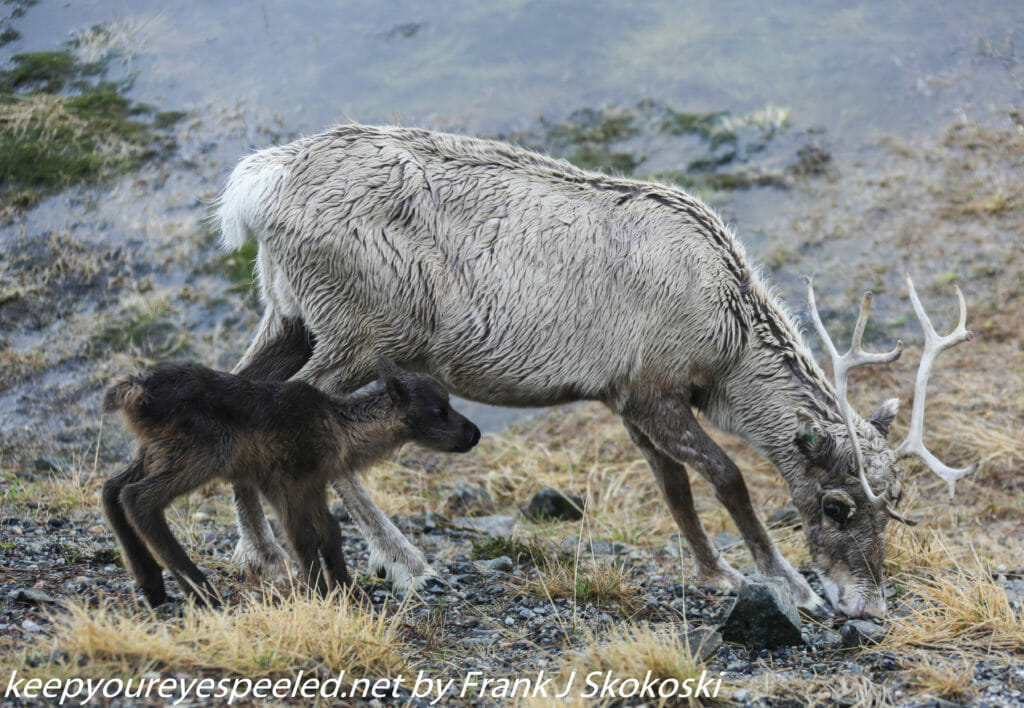
I was greeted with a heavy rain and some snow on my arrival in the northern port of Honningsvag Monday morning. It was around 11:30 a.m. and it was windy with temperatures in the mid 30’s. I had signed up for an arctic bird safari offered by Hurtiguten cruise line . I made my way in the heavy rain to a waiting bus and joined my fellow tourists. In addition to seeing the midnight sun, I wanted to see reindeer and puffins on this trip. I hoped to see at least one of the three in the North Cape. 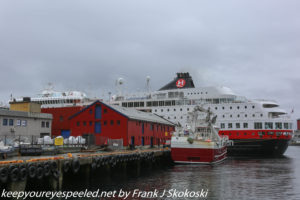
I have always been fascinated by the stories of reindeer. Of course we all heard the tales of Santa’s reindeer at the North Pole. But I also remember learning in elementary school about the people leaving in Lappland, and how their lives were intertwined with the of reindeer. And I always wanted to see the birds with the funny beaks, the puffins. Our guide arrived and we were soon off to the fishing village of Gjesvaer on the other side of Mageroya Island.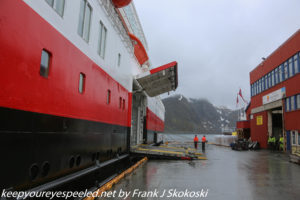
We soon left the small port of Honningvag and were driving through the bleak, treeless tundra landscape that covers the island. 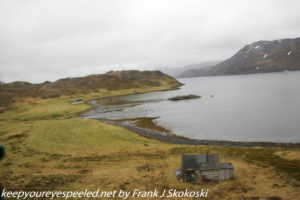
It was still pretty in a primordial way, even in the rain. 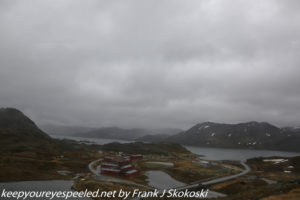
The road climbed upward giving us views of a beautiful fjord as the guide informed us of the history of the island. 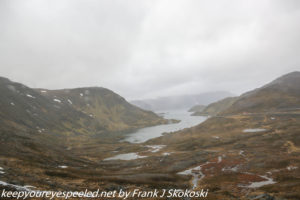
As we reached higher elevations we found some of the landscape covered with areas of snow from the previous long winter.
As we made our way along the winding roads of the tundra I was delighted to see my first reindeer! The bus from driver pointed it out and we stopped to watch this arctic animal so famous around the world. 
They really do exist. I soon learned that Santa’s reindeer and Rudolph are all females. The males do not have antlers. Only the female reindeer do and they lose them shortly after giving birth. We also saw a female and a newly born calf. One of my goals was accomplished. 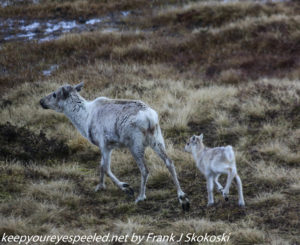
We neared Gjesvaer, a small fishing village on the Barent Sea. The locals still preserve some of the fish they catch in the traditional way, drying them. Once dried they are called stock fish and quite tasty. I had a fine meal of dried cod in Tromso. 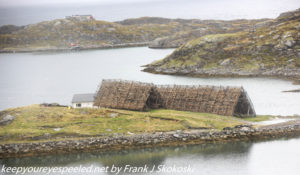
We soon made our way to the headquarters of the famous bird safari which operates tours of the Gjesværstappan islands. These isolated islands are home to thousands of arctic birds. The islands are a protected nature preserve. . Here is a link to some more photographs from my drive to Gjesvaer. Norway Day Five. Norway Day Five: Bird safari bus ride. June 4 2018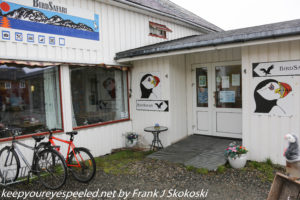
It was still raining and very windy as we boarded our boat.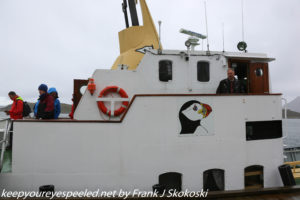
It didn’t stop any of the passengers, some very elderly, from standing on the deck in the rain and rough waters as we made our way to the Gjsaerstappan Islands. 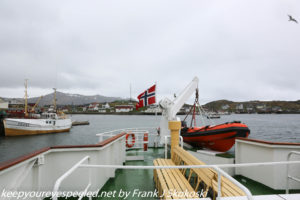
As we neared some very small islands, more like large rocks than islands, I saw my first razorbills.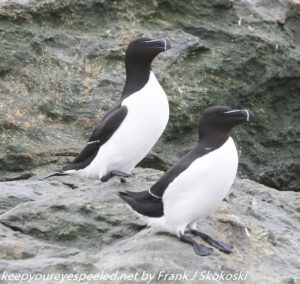
They were perched on the cliffs of the islands and soon scattered as we approached. Here is a link to some more photographs of the razorbills. Norway Day Five: Bird safari razorbills. June 4 2018.
As we watched the razorbills scatter and fly to the open ocean we encountered huge flocks of razorbills and puffins. Goal number two accomplished, I saw my first puffin. 
I could watch these unusual birds all day. The paddled and dived in the icy waters looking for a fishy meal. It was a delightful experience even in the cold rain and wind. Here is a link to some more photographs of the puffins. Norway Day Five: Bird safari puffins. June 4 2018. 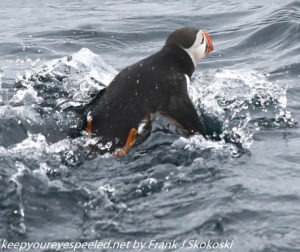
We approached the larger islands and next saw cormorants and shanks perched on the rocky cliffs. 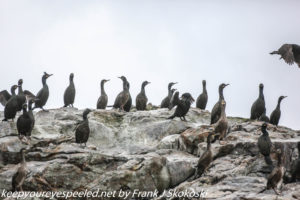
Again some flew off as we disturbed their solitude. 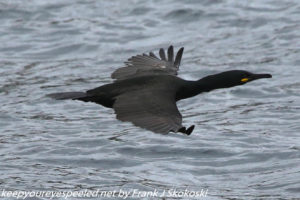
Finally we came to the massive cliffs of the Gjesvaerstappan Islands. As we approached the sheer cliffs and steep hillsides the rains stopped. 
And we were rewarded for our adventure into this cold northern sea with our first sighting of sea eagles. 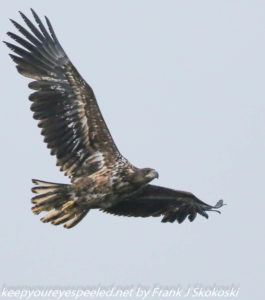
We watched a couple dozen of these magnificent birds soar through the air, or perched on cliffs as we cruised around the islands. Here is a link to some more photographs of the sea eagles. Norway Day Five: Bird Safari sea eagles. June 5 2018. 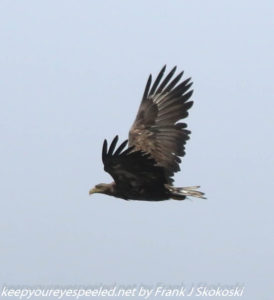
Even though the rain had stopped it was still cold and windy. But no one seemed to mind the weather. 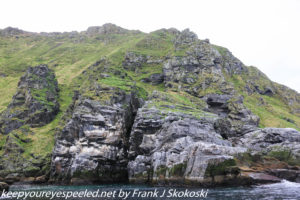 It was absolutely an amazing experience seeing all of the many species of birds that live in this remote part of our planet.
It was absolutely an amazing experience seeing all of the many species of birds that live in this remote part of our planet. 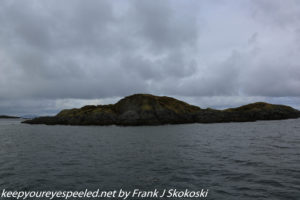
We continued our exploration of the islands and also saw colonies of sea gulls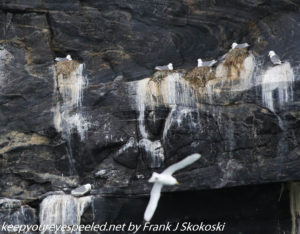
and gannets perched on the steep cliffs. It was amazing. Here is a link to some more of the birds we saw on the bird safari. Norway Day Five: Bird safari. birds June 4 2018. 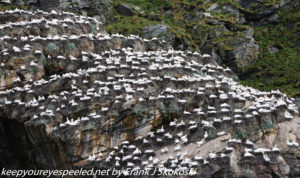
As we returned to the fishing village we were also encountered another wonderful sight, a pod of seals lounging on a rocky island in the cold arctic weather. A great way to end great trip. Here is a link to some more photographs of the seals. Norway Day Five: Bird safari seals. June 4 2018. 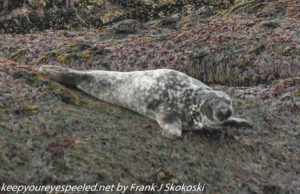
Our boat dropped us off at the bird safari house as the sun was trying to make an appearance. It didn’t last long. Showers soon returned. We had a few minutes to explore it’s exhibits and gift shop.
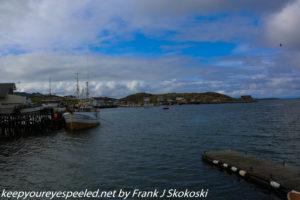 It was a good start to my visit to the North Cape. Here is a link to some more photographs from my tour on the bird safari. Norway Day Five Bird safari June 4 2018
It was a good start to my visit to the North Cape. Here is a link to some more photographs from my tour on the bird safari. Norway Day Five Bird safari June 4 2018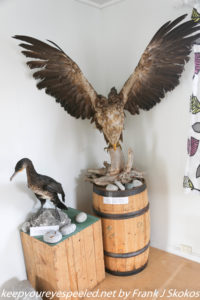
We now began our journey back Honningsvag once again enjoying the arctic tundra scenery in the rain. 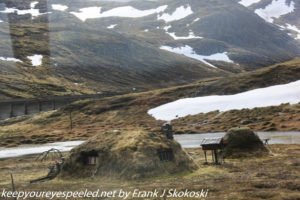
And we were delighted to encounter a group of reindeer as they crossed the road in search of food, including a female and her newly born calf. 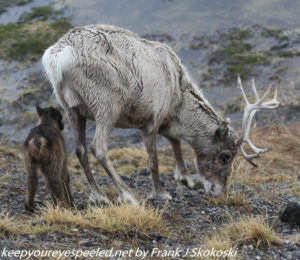
We learned they are brown for only a day after birth so this one was newly arrived to this cold and remote part of our planet. 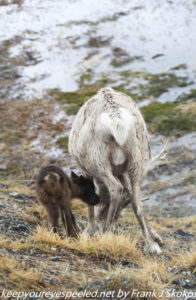
It was another truly amazing experience, one of so many I would have on this adventure. Here is a link to some more photographs of the reindeer. Norway Day Five bird safari reindeer. June 4 2018.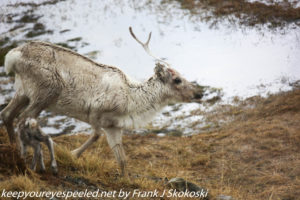
We were dropped off in Honningsvåg near the information center and it’s giant troll. I soon retrieved my luggage from the ship and was walking through the rain with my looking for my hotel. I crossed off two of the three reasons for my excursion to the Norwegian arctic, the reindeer and puffins. Now all I needed to do was see the midnight sun. Will I? We shall see.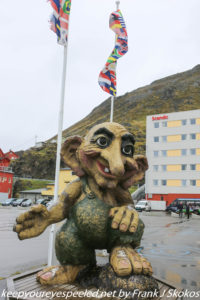
The most important thing for people to know about the governance of the Arctic is that we have a chance now to act to maintain the integrity of the system or to lose it. To lose it means that we will dismember the vital systems that make the Arctic work. It’s not just a cost to the people who live there. It’s a cost to all people everywhere. Sylvia Earle
Tags
Categories
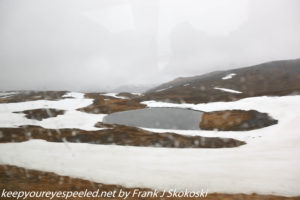
European Shag and Great Cormorants on the rock, White-tailed Eagle, the cliff nesting gulls are Black-legged Kittiwakes
Thanks Jonathon. I appreciate the help. I was going to post a birds of Norway gallery and try to identify them myself. I probably would have never finished it. I hope to work on it soon.